Cigarette smoke toxin hydroquinone and misfolding pancreatic lipase variant cooperatively promote endoplasmic reticulum stress and cell death
- PMID: 35704637
- PMCID: PMC9200355
- DOI: 10.1371/journal.pone.0269936
Cigarette smoke toxin hydroquinone and misfolding pancreatic lipase variant cooperatively promote endoplasmic reticulum stress and cell death
Abstract
Mutation-induced protein misfolding of pancreatic secretory enzymes and consequent endoplasmic reticulum stress can cause chronic pancreatitis. A recent study revealed that cigarette smoke also increases the risk of the disease through endoplasmic reticulum stress. Here, we investigated the cumulative cellular effect of the G233E misfolding human pancreatic lipase variant and hydroquinone; a main toxic constituent of cigarette smoke, using mammalian cell lines. We found that hydroquinone reduces cell viability on a dose-dependent manner through programmed cell death, and diminishes lipase secretion without affecting its expression. Interestingly, hydroquinone decreased the viability more markedly in cells expressing the G233E lipase variant, than in cells producing wild-type lipase. The more substantial viability loss was due to increased endoplasmic reticulum stress, as demonstrated by elevated levels of X-box binding protein 1 mRNA splicing and immunoglobulin binding protein, NAD(P)H:quinone oxidoreductase 1 and C/EBP homologous protein expression. Unresolved endoplasmic reticulum stress, and especially up-regulation of the pro-apoptotic transcription factor C/EBP homologous protein were likely responsible for the increased cell death. Our observations demonstrated that the combination of hydroquinone and misfolding pancreatic lipase variant promote increased levels of endoplasmic reticulum stress and cell death, which may predispose to chronic pancreatitis.
Conflict of interest statement
The authors have declared that no competing interests exist.
Figures
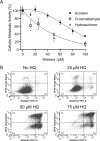
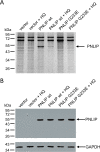
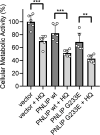
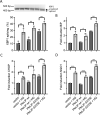
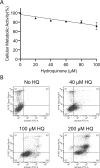
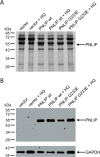
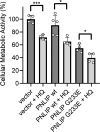
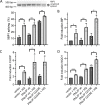
Similar articles
-
Missense PNLIP mutations impeding pancreatic lipase secretion cause protein misfolding and endoplasmic reticulum stress.Pancreatology. 2021 Oct;21(7):1317-1325. doi: 10.1016/j.pan.2021.07.008. Epub 2021 Aug 4. Pancreatology. 2021. PMID: 34373204
-
The Combination of Alcohol and Cigarette Smoke Induces Endoplasmic Reticulum Stress and Cell Death in Pancreatic Acinar Cells.Gastroenterology. 2017 Dec;153(6):1674-1686. doi: 10.1053/j.gastro.2017.08.036. Epub 2017 Aug 25. Gastroenterology. 2017. PMID: 28847752 Free PMC article.
-
The common truncation variant in pancreatic lipase related protein 2 (PNLIPRP2) is expressed poorly and does not alter risk for chronic pancreatitis.PLoS One. 2018 Nov 8;13(11):e0206869. doi: 10.1371/journal.pone.0206869. eCollection 2018. PLoS One. 2018. PMID: 30408063 Free PMC article.
-
Genetic risk in chronic pancreatitis: the misfolding-dependent pathway.Curr Opin Gastroenterol. 2017 Sep;33(5):390-395. doi: 10.1097/MOG.0000000000000380. Curr Opin Gastroenterol. 2017. PMID: 28650851 Free PMC article. Review.
-
Cell death induced by endoplasmic reticulum stress.FEBS J. 2016 Jul;283(14):2640-52. doi: 10.1111/febs.13598. Epub 2015 Dec 19. FEBS J. 2016. PMID: 26587781 Review.
Cited by
-
Characterization of novel PNLIP variants in congenital pancreatic lipase deficiency.Pancreatology. 2023 Dec;23(8):1036-1040. doi: 10.1016/j.pan.2023.10.022. Epub 2023 Oct 31. Pancreatology. 2023. PMID: 37926600 Free PMC article.
-
Kratom use disorder and unfolded protein response: Evaluating their relationship in a case control study.PLoS One. 2023 Jun 23;18(6):e0287466. doi: 10.1371/journal.pone.0287466. eCollection 2023. PLoS One. 2023. PMID: 37352311 Free PMC article.
References
Publication types
MeSH terms
Substances
LinkOut - more resources
Full Text Sources
Research Materials

